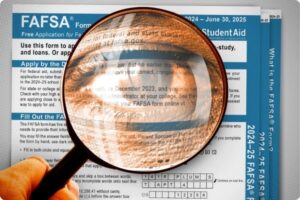
“Three New ‘Moves’ I’m Trying Out In The Classroom”
I’ve written quite a few posts for the British Council over the years. Unfortunately, most of them are no longer on their website. So, I’ll be republishing the ones here that I think still could be helpful to teachers. This one was published in 2019.

Mohamed_hassan / Pixabay
This is my seventeenth year teaching. Every year a small part of me says to myself, “I’ve got this down. I can just do what I’ve done in the past and this year will be a piece of cake!”
That thought always gets thrown out the window by the second month of school.
Yes, I can apply lots of my past lessons – and all of my previous experience – to each new year. But, especially in classes with English Language Learners, each new high school class brings a new group of very distinctive students – many from different cultures, with different traumas, varying levels of education, diverse degrees of English proficiency, and just their own individuality.
With these challenges, of course, come many opportunities. Each students’ life experiences can make for a richer classroom environment for all. And these new challenges help me become a better teacher by forcing me to try out new instructional strategies and experiment with new ways to deepen relationships and cultivate student intrinsic motivation.
One “benefit” I also gain is by getting countless chances to figure out ways to increase my levels of patience.
I’m now into the third month of a new school year. Here are the new ideas I’ve been applying so far:
Video Recording With Audio Narration
Like many other teachers of English Language Learners, I’ve had students record themselves for many years, often talking about an image. Unfortunately, many of the sites and apps I’ve used have gone out of business.
This year, my new “go to” app for this activity is Adobe Spark. It’s free to use online or as an app, and lets you create videos of up to thirty seconds. You can extend that by creating a slideshow and have thirty seconds of audio for each slide.
For each “theme” we study (family, home, food, etc.), I developed a simple writing frame like this for students to complete. Students have to do a drawing and write about it. It might be about a family member, or a room in their house, or their favorite food. Then, while the class is working on that sheet or another project, I have a peer tutor use my phone to take a picture of their image, bring them outside, and they record their reading the description they wrote. In seconds it’s uploaded and, then, the next day everybody watches all the videos, like this one (this particular one used a similar writing frame and was responding to the question “What is your favorite spot” based on our reading the book “The Story of Ferdinand.”
A student in the class could easily take the place of a peer tutor.
Students love this activity! It develops confidence, allows for risk-taking in a supportive environment, and reinforces writing, speaking, reading and listening skills. What’s not to like?
New Language-Learning Games
Find The Mistake
Again, like most ELL teachers, I’ve often use some form of a “Find The Mistake” game. Usually, though, I’ve done them “on the fly.”
This year, though, I’ve been more strategic. I’ve looked at student writing, identified common errors, and create slideshows of them – with each subsequent slide showing the correct version. Student pairs each have a mini-whiteboard where they have to correct the errors, and fruit snacks go to the winners! Here’s an example of one slideshow.
Quizizz (not really new)
Quizizz has been one of my favorite game sites for years, but I’m just using it more this year. Search for pretty much any ESL vocabulary you are studying, and a teacher has created a game for it. Use it in the computer lab or project it on a screen and students can use their cellphones. Students can’t get enough of it!
Student Self-Assessment
Some students are SLIFE (Students with Limited or Interrupted Formal Education), and are not that familiar with appropriate student behavior. Inspired by an exceptional colleague, I’ve developed a student self-assessment form. It lists ten qualities designed to reflect “how serious I am about learning English.”
It includes behavior (“I helped other students”) and academics (“I did my homework”). Students quickly grade themselves at the end of each week in each category and determine their overall grade. Students use the computers once-or-twice a week for language-learning and, during that time, I have a short conference with each student to review it and give them my own grade and have a discussion if we disagree.
Its a can be tricky determining what should and should not be included in formal school grading so I’m not yet clear how much weight this assessment will be in the grades that go home (I generally try not to have too much angst about it and am pretty flexible). However, I collect the assessments and if, at the end of the month, a student has generally had an A or a B we make a quick call home. Then and there, and I either speak briefly to the parent or leave a message (in special cases where a student who has been experiencing multiple challenges has a great week, I won’t wait until the end of the month to make that call).
I don’t necessarily expect to use this tool for the entire year, but it seems to be helping the class now to reach an “equilibrium” of sorts. I also have the benefit of speaking the home language of most of my students, so it’s easier for me to communicate with their parents.
What are your new teaching “moves” this year?
Source link



